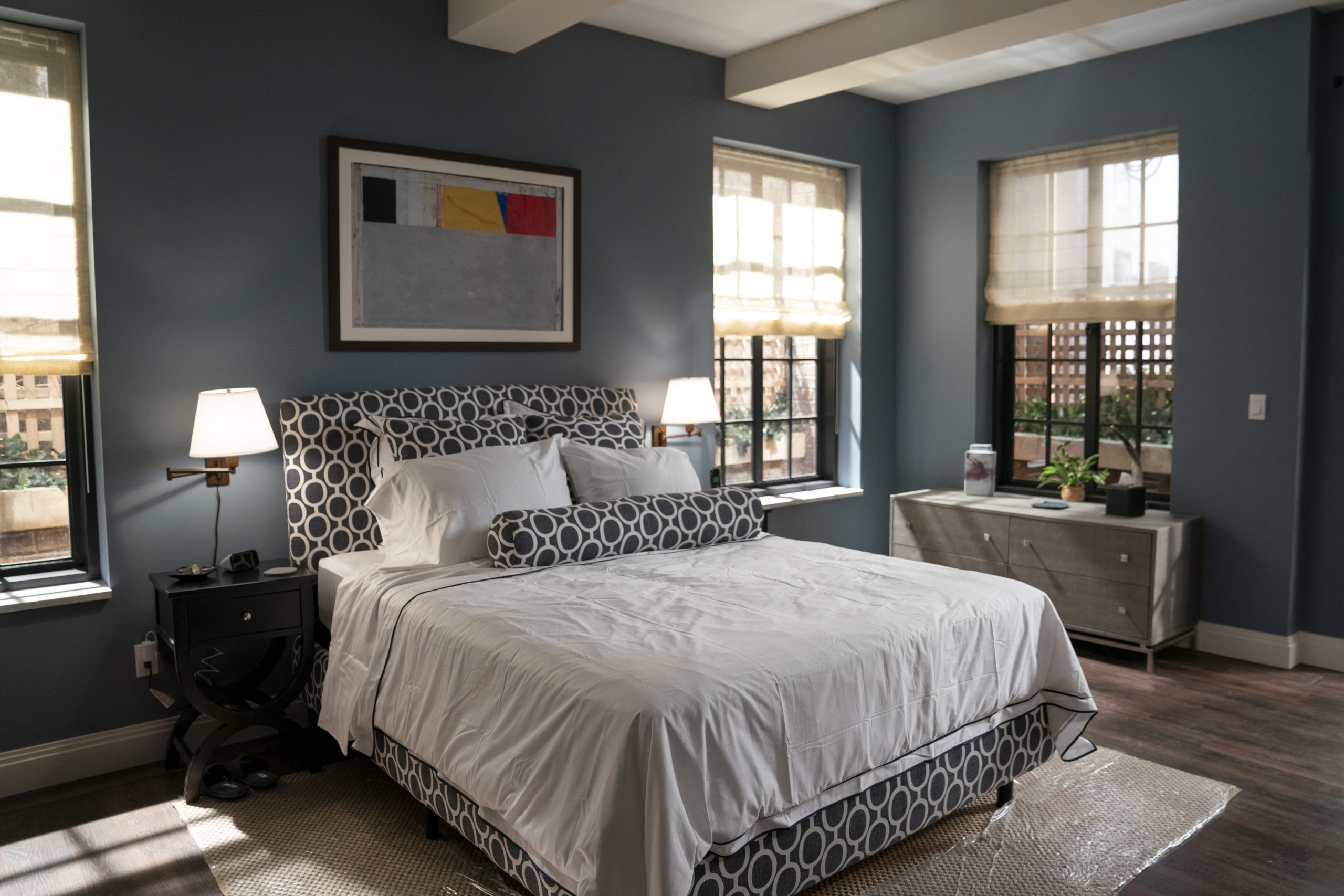As the cinema’s most recognizable backdrop, Manhattan sets the stage for another new tale in the Netflix romantic comedy series Uncoupled. Neil Patrick Harris stars as Michael, a recently single, late forty-something luxury realtor who navigates the perilous dating waters after the break-up of his 17-year relationship with hedge fund manager Colin (Tuc Watkins).
Created by Darren Star (who is no stranger to the trials and tribulations of life in the Big Apple after his juggernaut series Sex and the City), the series tackles real-life issues of aging, divorce, gay dating, and breathtaking domiciles that require mind-boggling wealth.

Production shot the exteriors of Michael’s charming prewar apartment at a building on Gramercy Park North. Production designer Ray Kluga worked with the pilot’s set decorator Michael Nallan on designs to reflect an Old World sensibility.
Courtesy of Netflix
A soundstage interior doubles as apartment’s interior. Kluga worked with artists to create reproductions that were used for filming and destroyed shortly therafter, which is a customary procedure in the world of set design.
courtesy of Ray Kluga and NetflixStar looked to veteran production designer Ray Kluga (the pair previously worked together on the series Younger) to create a Manhattan that, frankly, has never looked better. “Darren’s favorite neighborhood is Gramercy Park, so we chose a [Neo-Gothic style] 1920s apartment that is a hidden gem in the city for Michael,” he details. “It was the sort of space that an insider would love and a great contrast to the slick and shiny surfaces in the real estate world.” The exterior of the building was filmed on a corner of Gramercy Park (44 Gramercy Park North, to be exact), while the interior was shot on a single soundstage outside of the city. Kluga loved the interesting pre-war details reminiscent of an Old School pedigreed apartment (high ceilings, terrace, and double-height living room) and the galley kitchen with its long narrow counters synonymous with city apartments. The design gives a sense of Michael’s past, with character details translating into a love of art, travel, and books. “We tried to get a world of life images and things he would collect from his trips,” notes the designer. “It was very important to make sure the apartment was not too grand or big as it is New York City.”


Before and after: A designer rendering—and real-life version—of the apartment’s primary bedroom decorated with an added touch of contemporary fabrics and art.
Sarah Shatz/Netflix © 2022Audiences also get a sneak peek into the rarefied world of high-end residential real estate marketed to billionaire buyers. Michael’s client Claire (played by Marcia Gay Harden), a soon-to-be divorcée of wealthy means, has one of the more interesting homes in the sky. “We looked at Upper East Side apartments, as she would likely be in a ‘classic six’ Park Avenue apartment, but none of them had that wow factor we wanted from New York real estate,” says Kluga. Instead, his team found a 5,000-square-foot, two-story apartment with double-height windows, patterned hardwood flooring, requisite city views, and a gilt stairway in East 30s. Since Claire’s husband was an avid art collector, Cubist impressionist paintings played a predominant design role—and required a set-designer trick of the trade: “The walls were Venetian marble, so we had to make huge, massive frames with foam so they could be hung. We also faced a similar problem hanging ten-foot-tall drapes without touching the walls,” Kluga notes.

A patterned floor and spectacular double-height windows vie for attention in Claire’s (Marcia Gay Harden) 5,000-square-foot apartment in the sky.
Sarah Shatz/Netflix © 2022For the building’s modern interiors, set decorator Gabrielle Rosenberg sourced items from ACME and Bridge Furniture, Eclectic Encore, and City Knickerbocker lamps. The ivory color palette takes its cues from the costume designs, as Rosenberg notes: “I like the colors to play off the actor’s costumes. Layering set décor elements, mixing and matching the furniture, flowers, art, window, and set dressing all helps develop the characters.”
Like Netflix’s popular series Emily in Paris travelogue of the City of Light, Uncoupled serves as a virtual tour of the Big Apple. Manhattanites and those familiar with the city will recognize locations ranging from The High Line on the West Side and Prospect Park’s Beaux-Arts style Boathouse (featured in a spectacular wedding scene) to restaurant haunts such as the Upper West Side’s French Brasserie Le Monde, Midtown’s Atto Prime and Brooklyn’s hot spot Da Francesco. Belleayre Mountain resort in the Catskills is a chic, picturesque ski getaway that is also a unique location. And aficionados of the hit series The Marvelous Mrs. Maisel will recognize Midge’s apartment foyer on Riverside Drive, which doubles as the home of Michael’s mother.

Set decorator Gabrielle Rosenberg’s decor is a mix of contemporary furnishings from prop houses an ivory color palette.
Courtesy of NetflixUncoupled provides a stylish travelogue of Manhattan’s past and present while giving aspirational living a new meaning. As Kluga concludes, “I love going back to classic New York movies like Breakfast at Tiffany’s that were shot in the 1960s and had this kind of sophistication. That is the world we were going for with Michael while trying to capture what is out there in contrast to the city’s glittering high-rise towers.”


















